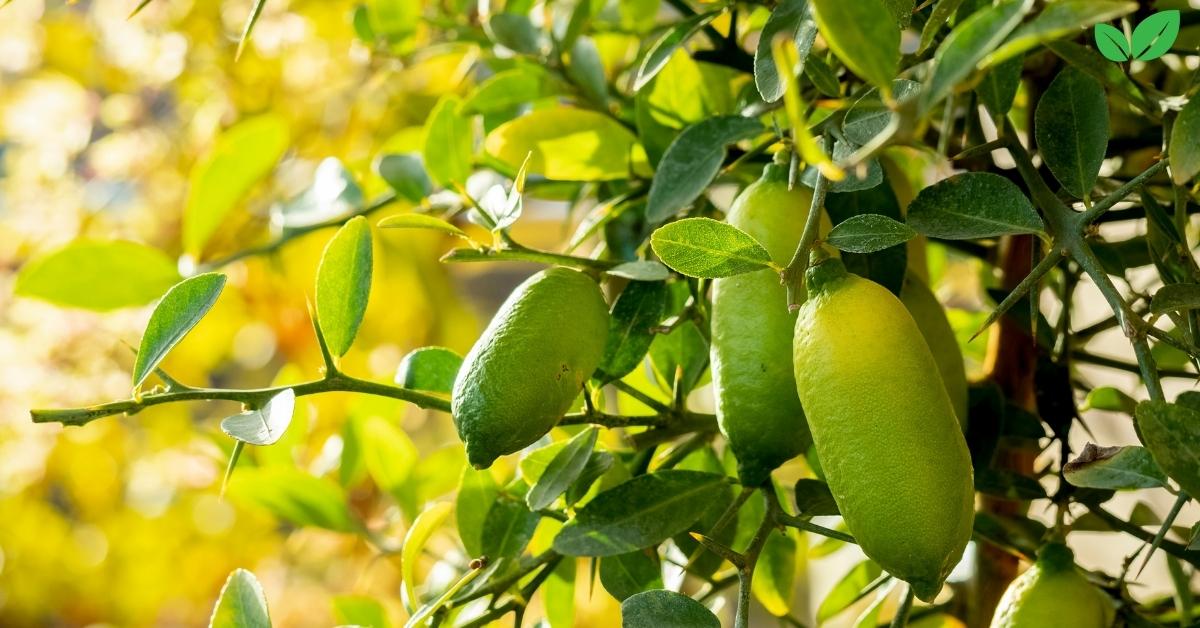Finger lime (Citrus australasica), often called “caviar lime” due to its unique, pearl-like pulp, is a rare and fascinating citrus fruit native to the rainforests of Australia. Belonging to the Rutaceae family, it has gained attention not only for its culinary uses but also for its ecological significance and adaptability. This resilient plant, characterized by its thorny branches and small, cylindrical fruit, is well-suited to its native environment, where it plays a role in supporting biodiversity and promoting ecosystem stability.
This article explores the environmental niche of finger lime, focusing on its native habitat, ecological roles, interactions with other species, and the conservation challenges it faces. By understanding the unique characteristics and ecological contributions of it, we can appreciate its role in promoting biodiversity, supporting pollinators, and maintaining the health of its natural environment.
Overview of Finger Lime: Characteristics and Habitat
Finger lime is a small, thorny tree or shrub found in the wild subtropical rainforests of eastern Australia, primarily in Queensland and New South Wales. Known for its cylindrical, finger-like fruits filled with caviar-like vesicles, this plant has a rich history in both indigenous Australian culture and local ecosystems. The fruit is valued for its unique appearance, tart flavor, and versatility, making it a prized addition to the gourmet culinary world.
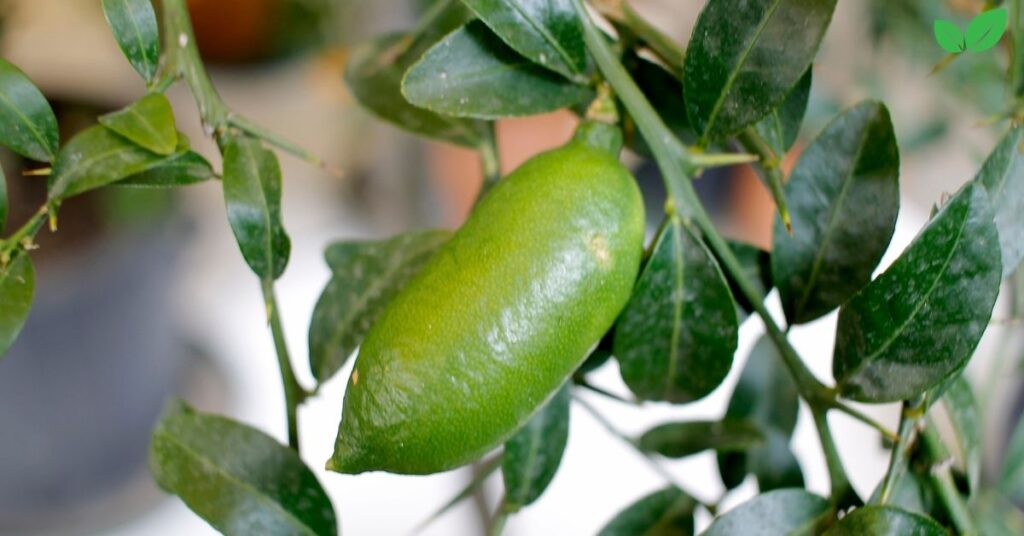
1. Physical Characteristics
Finger lime trees can grow up to 20 feet in height, although they are often found as smaller shrubs in their native rainforest understorey. Their branches are dense and thorny, covered in small, glossy leaves that aid in water conservation. These leaves are adapted to the warm, humid conditions of the rainforest, enabling the plant to survive seasonal variations in moisture and sunlight availability.
The finger lime fruit is one of the most distinctive features of this plant. Small and elongated, it resembles a finger and can vary in color from green to pink, red, yellow, and even black. Inside, the fruit is filled with tiny, round vesicles filled with juice, often called “lime caviar.” This unique structure is thought to aid in seed dispersal, as the vesicles can easily be transported by rain, animals, or gravity, allowing seeds to reach new locations within the rainforest.
2. Native Habitat: Subtropical Rainforests
It is native to the subtropical rainforests of eastern Australia, where it grows in the shaded understory. These rainforests are characterized by high humidity, consistent rainfall, and warm temperatures, all of which support a wide variety of flora and fauna. As an understorey plant, finger lime benefits from the protection provided by taller trees, which shield it from direct sunlight and create a moist, shaded environment.
The plant’s natural habitat is rich in biodiversity, housing many interdependent species, from insects and birds to mammals and other plants. Finger lime contributes to the stability and productivity of this ecosystem, supporting species that rely on it for food, shelter, and ecological balance.
Adaptations of Finger Lime to Its Environment
Finger lime has developed several adaptations that allow it to thrive in its rainforest habitat. These adaptations help it survive environmental stresses, from variable moisture levels to potential threats from herbivores and pests.
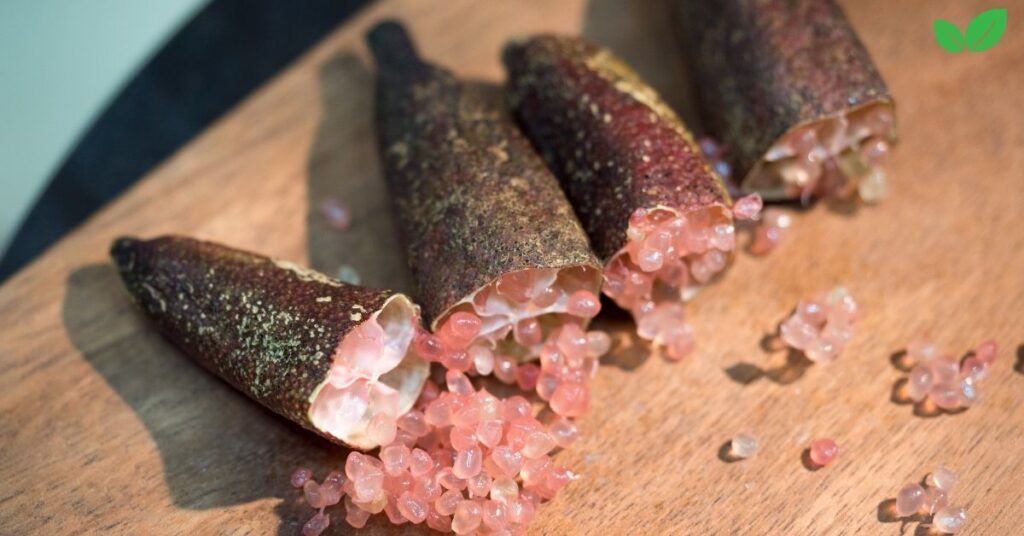
1. Tolerance to Shade and Variable Light Conditions
One of the primary adaptations of finger lime is its tolerance for low-light conditions. As an understorey plant, it has adapted to capture and use limited sunlight filtered through the rainforest canopy. Its leaves are small but efficient in photosynthesis, allowing it to make the most of the light it receives. Additionally, the plant can adjust its growth rate and foliage density in response to changing light conditions, which helps it survive in different microhabitats within the forest.
This shade tolerance allows it to coexist with larger trees and plants, occupying an ecological niche where it faces less competition for light. This adaptability is essential for its survival in densely vegetated rainforests, where sunlight is a limited resource.
2. Drought Resistance and Water Conservation
Although it is native to rainforests, it is also adapted to withstand periods of drought or reduced rainfall. Its small, thick leaves have a waxy coating that helps reduce water loss through evaporation, conserving moisture during drier periods. This adaptation is valuable not only in its natural habitat but also in cultivated environments, where finger lime plants can thrive with minimal water requirements once established.
The plant’s extensive root system also helps it access water and nutrients from the soil, even in challenging conditions. This drought resistance makes finger lime an ideal plant for dry or marginal areas, where other species may struggle to survive.
3. Defense Mechanisms: Thorns and Chemical Compounds
Finger lime has developed natural defense mechanisms to deter herbivores. Its branches are covered with sharp thorns, which protect it from being browsed by animals. This physical defense is particularly effective against mammals that might otherwise feed on its leaves and fruit, helping to preserve the plant’s energy for growth and reproduction.
In addition to physical defenses, it produces chemical compounds in its leaves and fruit that may deter pests and diseases. These compounds contribute to the plant’s resilience and may also play a role in its unique flavor profile, making the fruit less palatable to some animals but highly desirable to humans.
Ecological Roles and Benefits of Finger Lime in Rainforest Ecosystems
Finger lime plays several vital roles in supporting rainforest ecosystems. From providing food and shelter to facilitating nutrient cycling and soil health, this plant contributes to the stability and biodiversity of its habitat.
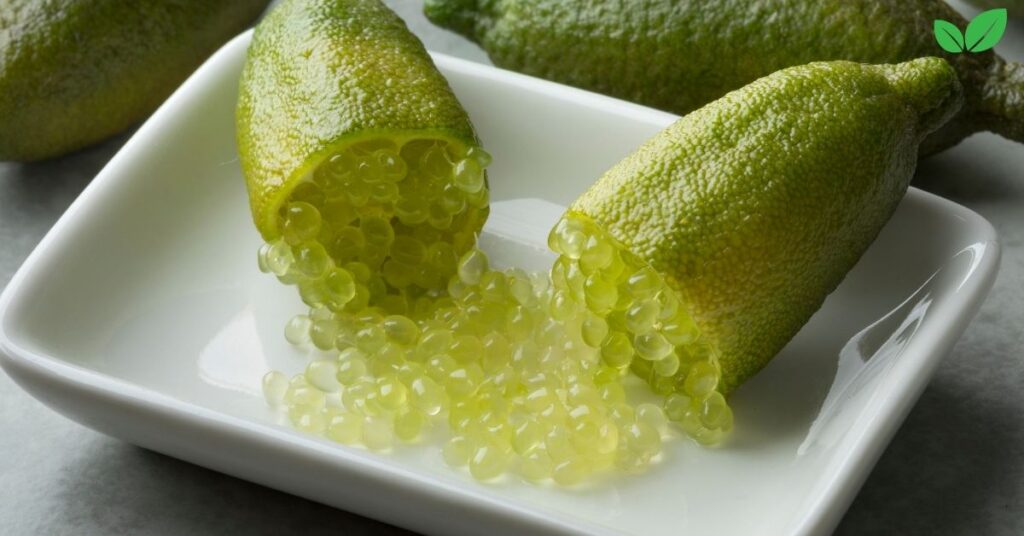
1. Supporting Pollinators and Biodiversity
Finger lime is an important food source for native pollinators, including bees, butterflies, and other insects. The plant’s small, fragrant flowers attract pollinators, which play a crucial role in the plant’s reproduction. These pollinators, in turn, benefit the rainforest by facilitating the pollination of other plants, supporting the ecosystem’s plant diversity and genetic variation.
By attracting a range of pollinators, finger lime indirectly contributes to the health of the ecosystem, as pollinators help sustain the reproduction of numerous plants. The presence of these pollinators also supports animal species that feed on them, creating a ripple effect that enhances biodiversity throughout the ecosystem.
2. Soil Health and Nutrient Cycling
Finger lime’s fallen leaves and organic matter contribute to soil enrichment through decomposition. When leaves, fruit, and other plant material decompose, they return nutrients to the soil, supporting the growth of other plants. This process is essential in rainforest ecosystems, where rapid nutrient cycling sustains high levels of biodiversity.
The plant’s root system also helps stabilize soil, preventing erosion and maintaining soil structure, especially in areas with heavy rainfall. By contributing to soil health and structure, it supports the productivity and resilience of the rainforest, promoting a sustainable environment for other plant and animal species.
3. Habitat and Shelter for Small Wildlife
It provides valuable shelter and habitat for various small animals and insects. Its dense foliage offers protection from predators and environmental stress, creating microhabitats that support diverse wildlife. Small birds, reptiles, and insects find refuge in its branches, which offer shade, cover, and nesting sites.
The plant’s thorny branches also serve as a deterrent to larger animals, providing a safe space for smaller creatures. This habitat creation contributes to the complexity and stability of rainforest ecosystems, where interdependent species rely on one another for survival.
Interactions of Finger Lime with Other Species
Finger lime interacts with various species within its ecosystem, forming complex relationships that benefit both the plant and its surrounding environment. These interactions include mutualistic relationships with pollinators and seed dispersers, competitive interactions with other plants, and defensive relationships with herbivores.
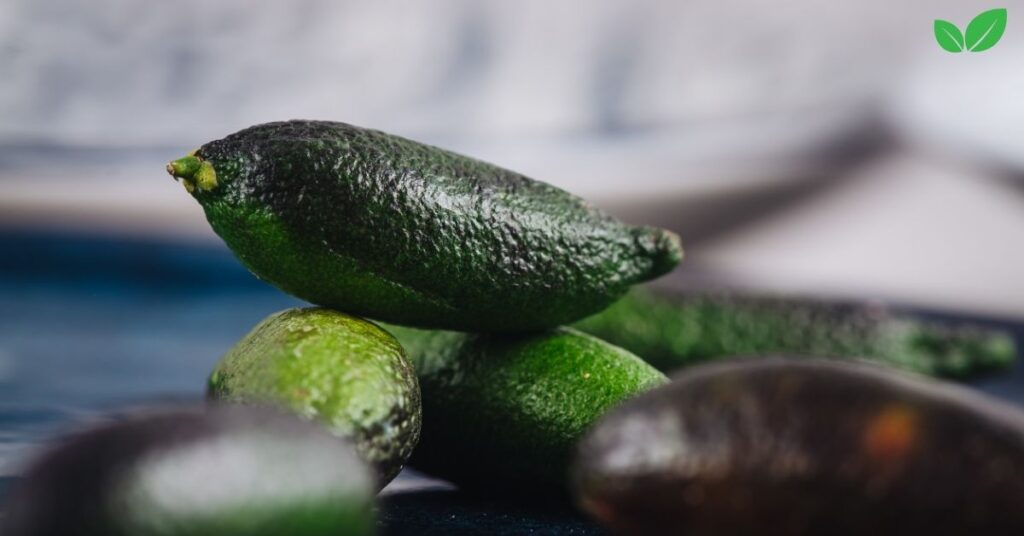
1. Mutualistic Relationships with Pollinators and Seed Dispersers
Pollination is essential for finger lime’s reproductive success, and the plant’s small, fragrant flowers attract a variety of pollinators. Native bees and butterflies visit the flowers, transferring pollen and helping ensure successful fruit production. This mutualistic relationship benefits both parties, as pollinators receive nectar and the plant achieves successful reproduction.
Finger lime also benefits from seed dispersal by animals that consume its fruit. While the fruit’s tart flavor and unique structure may deter some herbivores, certain animals are attracted to its nutrient-rich pulp. By consuming the fruit and dispersing the seeds, these animals aid in the plant’s reproduction and the establishment of new plants in suitable habitats.
2. Competitive Interactions with Other Plants
As an understory plant, finger lime competes with other vegetation for resources such as light, water, and nutrients. Its adaptations, such as shade tolerance and drought resistance, give it an advantage in the rainforest, allowing it to coexist with other plants without directly competing for sunlight.
In areas where resources are limited, finger lime’s ability to adapt to variable conditions reduces its reliance on intense competition, enabling it to survive in diverse environments. This resilience contributes to the overall diversity and balance of the rainforest ecosystem, where each species plays a role in maintaining ecological stability.
3. Defense Against Herbivores and Pests
Finger lime’s thorny branches and chemical defenses help protect it from herbivores and pests. The sharp thorns deter larger animals, while the plant’s chemical compounds may discourage insects and other small grazers from feeding on its leaves and fruit. These defense mechanisms enhance the plant’s survival, ensuring that it can continue to contribute to the ecosystem through its roles in pollination, habitat creation, and nutrient cycling.
The plant’s ability to resist herbivory also supports its long-term health and productivity, allowing it to reproduce and maintain stable populations within the rainforest.
Conservation Challenges and the Future of Finger Lime
Despite its adaptability, it faces several conservation challenges, including habitat loss, climate change, and pressures from commercial harvesting. These challenges impact not only the plant’s survival but also the ecosystem services it provides.
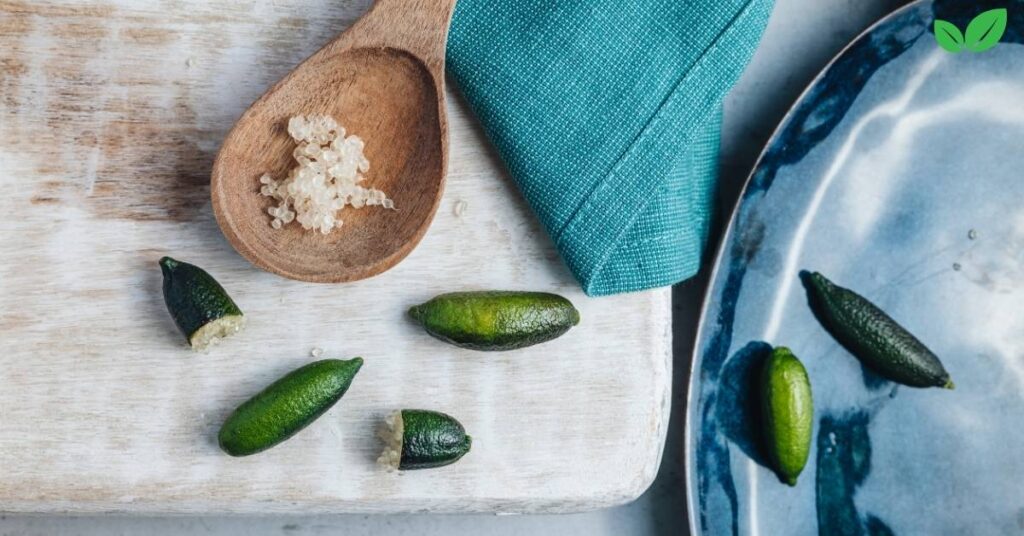
1. Habitat Loss Due to Deforestation
One of the most significant threats to finger lime is habitat loss caused by deforestation. As rainforests are cleared for agriculture, urban development, and logging, the natural habitat of finger lime is reduced, limiting its ability to thrive in the wild. Habitat loss also affects the pollinators and other species that rely on finger lime, creating a cascading effect within the ecosystem.
Conservation efforts focused on preserving and restoring rainforest habitats are essential for protecting finger lime populations and maintaining ecosystem stability. By safeguarding its natural environment, we ensure that finger lime can continue to support biodiversity and contribute to the health of tropical ecosystems.
2. Climate Change and Environmental Shifts
Climate change presents challenges for finger lime by altering the environmental conditions it depends on. Rising temperatures, changing rainfall patterns, and increased frequency of extreme weather events can impact the plant’s growth, reproduction, and survival. For example, prolonged droughts or temperature extremes may affect its ability to produce fruit or withstand pests.
To address these challenges, conservation efforts should focus on promoting resilience within rainforest ecosystems. Strategies such as habitat conservation, biodiversity promotion, and climate adaptation measures will help support finger lime populations in the face of changing environmental conditions.
3. Commercial Harvesting and Overexploitation
The increasing demand for finger lime in the culinary and horticultural markets has led to concerns about overharvesting. While cultivated finger lime is widely available, wild populations may be threatened if harvesting is not carefully managed. Overharvesting can reduce genetic diversity and hinder the plant’s natural regeneration, impacting its role within rainforest ecosystems.
Promoting sustainable harvesting practices and encouraging cultivation over wild collection are essential steps in conserving finger lime populations. By adopting responsible harvesting practices, we can protect wild populations and ensure the continued availability of finger lime for both culinary and ecological purposes.
Conclusion
Finger lime is more than a unique citrus fruit; it is a vital component of rainforest ecosystems, contributing to biodiversity, soil health, and habitat creation. Its adaptations to shade, drought, and variable conditions make it a resilient and valuable plant within tropical rainforests. From supporting pollinators and small wildlife to stabilizing soil and cycling nutrients, finger lime fulfills essential ecological roles that enhance the health and stability of its environment.
However, finger lime faces conservation challenges, including habitat loss, climate change, and overharvesting. Protecting this plant and the ecosystems it supports requires a comprehensive approach, including habitat conservation, sustainable harvesting practices, and climate adaptation measures. By understanding and conserving finger lime, we contribute to the health and resilience of tropical ecosystems, ensuring that these biodiverse environments continue to thrive.
FAQs
1. What makes finger lime unique among citrus fruits?
Finger lime is unique for its small, cylindrical fruit filled with pearl-like vesicles, often referred to as “lime caviar,” which has a distinct tart flavor and appearance.
2. Where is finger lime naturally found?
Finger lime is native to the subtropical rainforests of eastern Australia, particularly in Queensland and New South Wales.
3. How does finger lime support biodiversity?
Finger lime provides food and shelter for pollinators, small animals, and insects, supporting rainforest biodiversity and facilitating pollination.
4. What are the primary threats to finger lime populations?
Habitat loss, climate change, and overharvesting for commercial purposes are significant threats to wild finger lime populations.
5. How is finger lime harvested sustainably?
Sustainable harvesting involves cultivating finger lime in farms rather than relying on wild populations, reducing the impact on natural ecosystems.
6. Can finger lime adapt to changing climates?
Finger lime is adaptable but may struggle with extreme climate changes. Conservation efforts focused on resilience and habitat protection are essential for its survival.
Read More: Thuja Occidentalis: Exploring Its Environmental Niche and Ecological Importance

